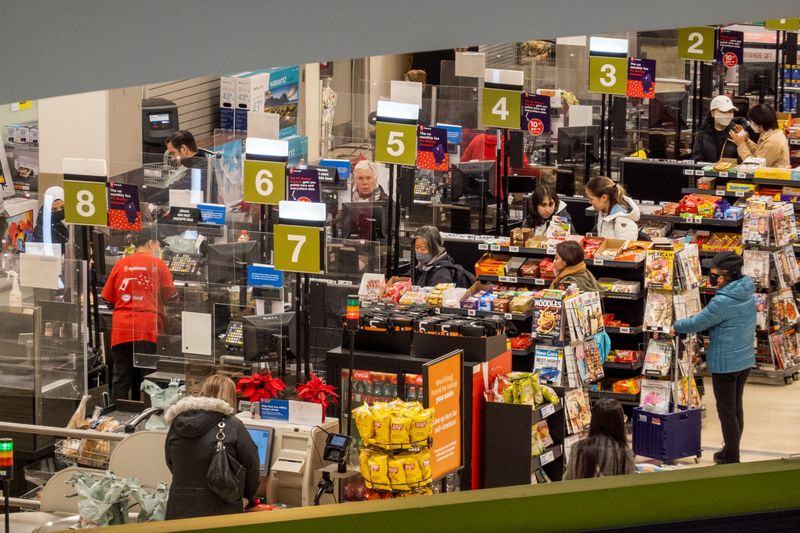By Promit Mukherjee and Ismail Shakil
OTTAWA (Reuters) -Canada's inflation rate surprisingly cooled in February to its slowest pace since June, and closely-watched core inflation measures eased to more than two-year lows, data showed on Tuesday, prompting investors to increase their bets for a June rate cut.
Annual headline inflation cooled to 2.8% last month, beating analyst expectations for a 3.1% rise, and below 2.9% increase in January. On the month, the consumer price index rose 0.3%, less than a forecast 0.6% rise, Statistics Canada said.
Money markets increased their bets for a first 25 basis point rate cut in June to more than 75%, from 50% before the inflation data. The bets for an April rate cut increased to over 28% from 18% before the numbers were released.
"We expect central bankers will sound more dovish in April, thereby setting up a rate-cutting cycle beginning in June," said Royce Mendes, head of macro strategy for Desjardins Group.
The drop in inflation also weakened the Canadian dollar to a three-month low, with the loonie trading 0.54% lower in the day at 1.3604 against the dollar, and Canadian government 10-year bond yields fell 9.5 basis points to 3.502%.
Canadians in February benefited from softer price growth in food purchased from stores, and a drop in prices of cellular plans and internet services, which were the main contributors to the deceleration, Statscan said.
The rise in grocery prices eased to 2.4%, slower than the headline inflation rate for the first time since October 2021.
Analysts warned that with the current data, a rate cut in June was warranted and any further delay could hurt the economy.
"By delaying any decision to cut until June, the Bank of Canada runs the risk ... an outcome that could see it play catch-up with the economy in the second half of this year," Simon Harvey, head of FX analysis at Monex, said in a note.
Canadian data diverged from the US, its biggest trading partner, which last week saw a jump in consumer prices for February, throwing cold water on any remaining hopes of a rate cut by the Federal Reserve before June.
The Bank of Canada's (BoC) preferred measures of core inflation edged down to their lowest levels in more than two years. CPI-median slowed to 3.1% from 3.3% in January while CPI-trim decreased to 3.2% from 3.3%.
CPI-median has slowed or held steady for six consecutive months and is now at the lowest pace since the 3.1% recorded in November 2021. CPI-trim's pace decelerated for the second consecutive month and is now slowest since July 2021.
The BoC has said it is looking for sustained evidence of downward momentum in underlying inflation to consider lowering interest rates.
The central bank in January projected headline inflation to remain around 3% in the first half of 2024, before cooling to 2.5% by the end of the year. It will update its forecasts next month. Its next rate announcement is on April 10.
The bank increased rates by 475 basis points to a 22-year high between March 2022 and July 2023 and has kept them on hold since then for five consecutive meetings in its efforts to cool inflation. At its last rate announcement in March, the bank said underlying inflation meant it was too early to consider a cut.

Offsetting the inflation deceleration in February was a year-over-year increase in gasoline prices, which rose 0.8% in February after a 4% decline in January, Statscan said.
Excluding volatile food and energy, prices rose 2.8% compared with a 3.1% rise in December.